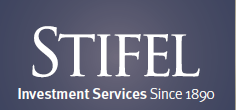I
Investment Strategist
Investment Strategist
Nearing Retirement. Changing Jobs. Consider a Rollover.
If you’re getting ready to retire or are simply
considering a job change, you may be wondering
what you should do with the money you’ve saved
in your employer-sponsored retirement plan. When
the time comes to make a job transition, you’ll have
several options. Each has its own pros and cons.
Cash out.
This option may sound tempting, but
it comes with a high degree of risk. While cashing
out gives you immediate access to your money, you
will not only forgo any potential tax-deferred growth
your assets could have generated, you could also
be faced with a hefty tax bill. If you cash out prior
to reaching age 59 ½, your distribution will be subject to both ordinary income taxes and a 10 percent early
withdrawal penalty (some exceptions to the 10 percent penalty may apply, most notably if you are age 55
or older at the time of termination of employment). In addition, your former employer is required to withhold
20 percent of the distribution for federal taxes, further reducing the amount you stand to receive. The 20
percent withholding (but not the 10 percent penalty) will be counted against your income tax due or toward
any refund when you file your tax return. Therefore, you may want to consider other sources before tapping
into your retirement savings, a move that could potentially sabotage your long-term plans.
Leave your money in the existing plan.
If your retirement plan balance exceeds $5,000, the plan
provider is required to allow you to keep your money in the plan after you’ve left the company. This is a
simple option, as it requires no action on your part and avoids the tax and penalties associated with taking
a payout. And due to economies of scale, your previous employer’s plan may offer such benefits as low fees
and discounts on investment-related expenses. Despite this option’s simplicity, however, its disadvantages
may outweigh its advantages.
First of all, you won’t be able to contribute any additional dollars to your old plan, and you’ll also be
limited to only the investment options available through the plan. Your former employer may make
changes to its plan that could adversely affect your account, and if the company suddenly goes out of
business or merges with a competitor, although your assets will be protected, things could become even
more complicated. Some plans even assess an annual fee to terminated participants.
Finally, it can be easy to forget about the money you’ve left in your previous employer’s retirement plan,
especially if you decide to participate in your next employer’s plan. If you’re a frequent job changer, you
could wind up with money in several different employer-sponsored plans. Under such a scenario, you
would be responsible for furnishing each plan provider with address changes and beneficiary updates
as they occur. And if your assets are spread out among several different plans, they may be invested in
vehicles that overlap with each other or contradict your overall investment strategy. By having all of your
retirement savings consolidated in one place, it is easier to ensure that all of your investments are properly
aligned with your goals.
April 2014
SNINS0314

